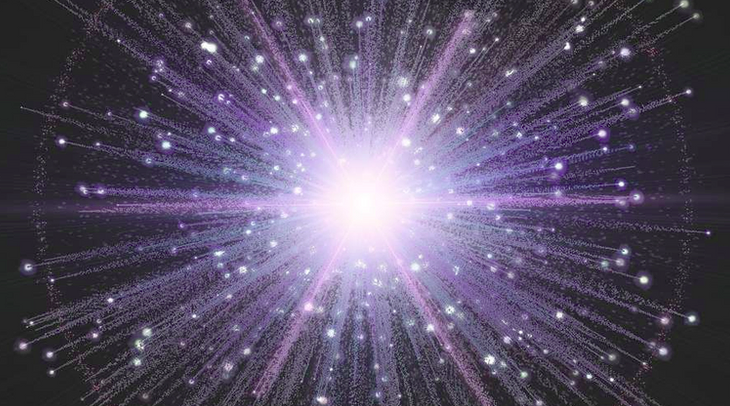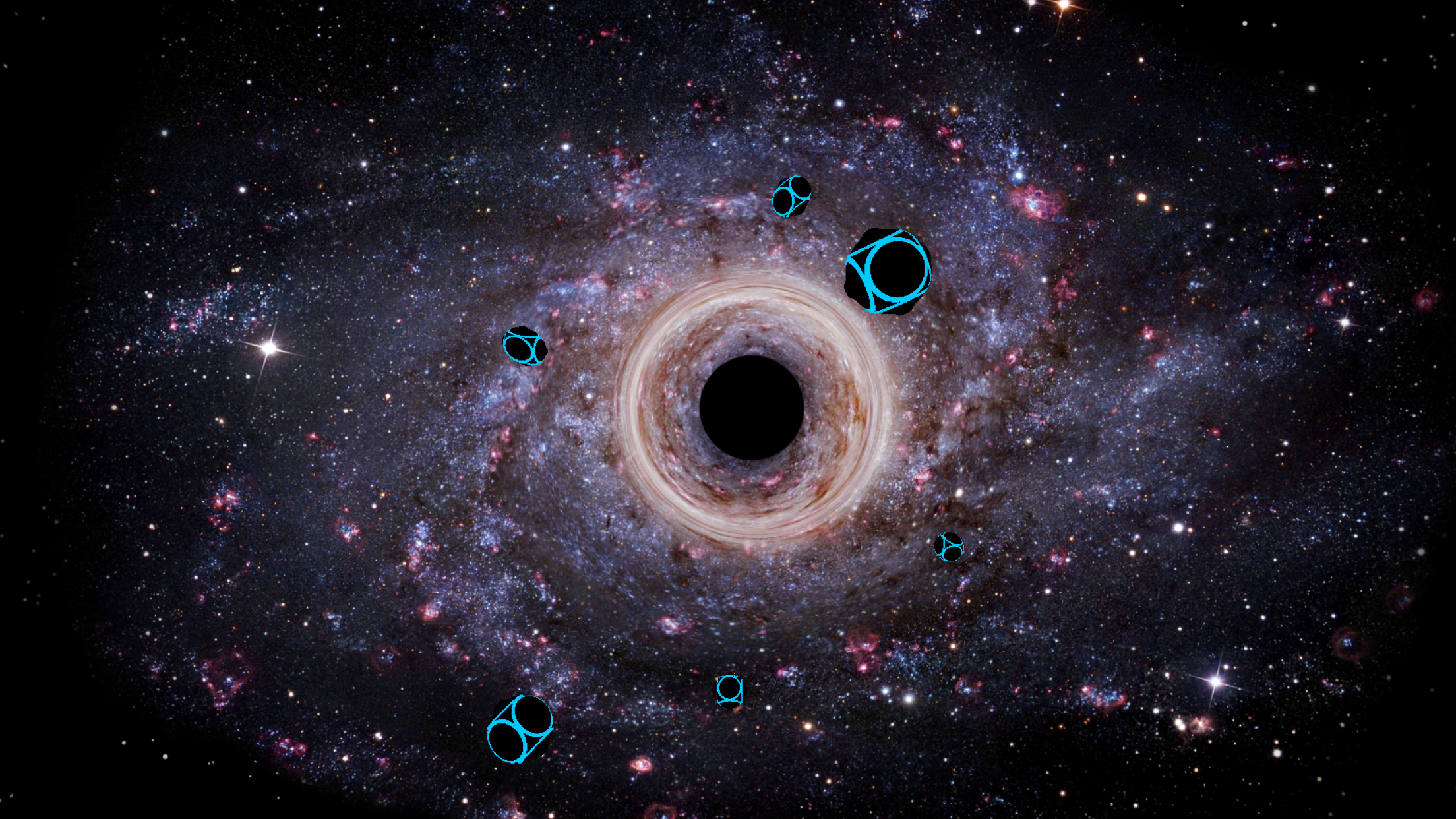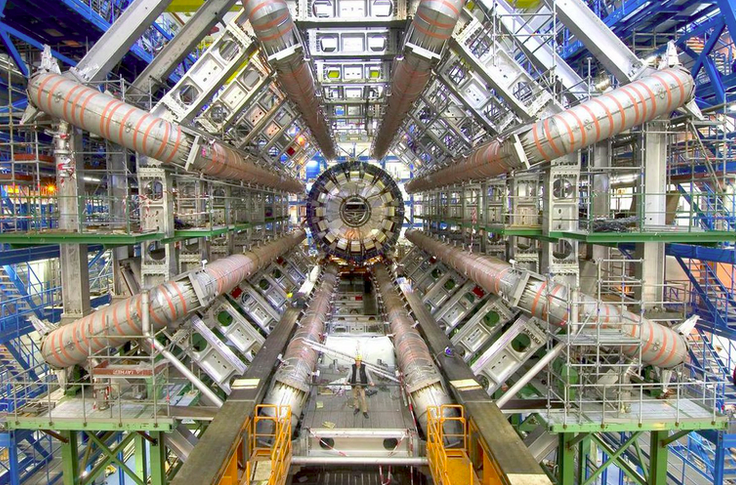Thoughts :: The kick-start and the end-game of the universe
[Article-Physics]
I might not be able to cover anything related to Tony Stark’s whereabouts or the birth of the legendary Thanos or perhaps the generation of the infinity stones, but I may be able to give a curious lay-man some insights into the cosmological timeline of the universe, that too in-short. (Come-on, you can let me play a bit with the title, “Origin and Fate of the Universe” is too much in use!)

Dating back to 340 BC, the Greek philosopher Aristotle put up some logical arguments that were strong enough to make people believe that the Earth was a spherical ball and not a flat plate. By enough contemplation, he had pin pointed the two arguments which are explained below.
The earth must be round, since for a person standing at the pole, the pole star appeared to a position in sky astronomers call the ‘Zenith’, that is, a point overhead to the observer. But interestingly, the same star appeared near the horizon to the person standing at the equator.
The second argument that he provided was that lunar eclipse occurs when the Earth comes in between that Sun and the moon. The shadow of earth on the moon was always round, no matter at whatever angles the heavenly bodies were situated with respect to each other. This was only possible if the earth was spherical, since, if it were flat, the shadow would have been elliptical.
Soon philosophers and, the scientists at that time started coming forward with various ideas and propositions, for example, Ptolemy’s geocentric model, in which he declared that the earth was at the centre of the universe; Copernicus’ Heliocentric model, in which the earth and the planets revolve around the Sun to make up the solar system; then Kepler gave his laws of planetary motion and declared that the orbits of the planets are elliptical; then Galileo Galilei’s Solar-Planet model and his observations of the various planets through his own telescope, etc. The details of such models are not required to be covered here. What is important is to understand that Astronomy and cosmology soon started to occupy the great minds that existed at that time, and, slowly, astronomy and cosmology came out to be the most popular macro-sciences.
With this, with time, various theories started coming up, about how our universe must have been born; how it must have evolved to the state we see it now. With the fourth dimension, time only, various observations that show that the universe was increasing in size were made. Scientists had developed ways to determine the speed at which the galaxies were moving away from us or towards us. Consider the year 1924, when the American astronomer Edwin Hubble demonstrated that ours was not the only galaxy. Various other galaxies were also present, with vast tracts of empty space between them. To prove this, Hubble needed to determine the distances to our and the other galaxies, and with time, record the change in that distance, to compute the velocity. Hubble was forced, therefore, to use indirect methods to measure the distances. The knowledge of the luminosity of the stars in other galaxies, along with measured apparent brightness would help us calculate the required distance. To make these procedures easy, an indirect method, which used the Doppler’s effect, was put forward. The spectra of various stars were observed. For a star moving away from us, the distance between two adjacent crests or troughs of the electromagnetic wave should increase, that is the wavelength should increase. Hence, the stars moving away from us will have their spectra “red shifted”.

All of these observations suggested one thing. The stars were moving away from us! And not just that! The speed at which the galaxy was moving away from us is directly proportional to the distance between that galaxy and us. This meant that the galaxy that was farther away from us was moving at a much greater speed! And this made the scientists believe that the universe is not static. It is in fact expanding, and at a very fast rate.
In 1927, the Belgian Catholic priest Georges Lemaître proposed an expanding model for the universe to explain the observed redshifts of spiral nebulae, and calculated the Hubble law. He based his theory on the work of Einstein and De Sitter, and independently derived Friedmann’s equations for an expanding universe. He proposed that the universe began from a single primordial atom, an infinitesimally small speck of infinitely large amount of energy! This theory was a breakthrough in cosmology, and with this, came various other propositions that were clearly able to explain the reasons for our expanding universe.
Years passed, and cosmologists went old. Soon, in order to explain the famous phenomena that came into picture at that time, called Inflation, which means explosive expansion of universe in a very small period of time at the moment the big bang had just occurred, Astrophysicist Alan Guth proposed cosmic Inflation in 1979. The universe, as given the astrophysicists, expanded from size of a grain of sand to the size of earth, in about a millionth of a billionth of a billionth of a billionth of a second. This indicated the two points in space were moving farther away from each other with a speed which is greater than the speed of light! But this cannot be possible as said by Sir Albert Einstein, in his very famous theory of Special Relativity. Oh! Amazing science! With further research a conclusion came up that it were not the points that were moving greater than the speed of light. At the time of Big Bang, the space between the two points was expanding at a speed very near to the speed of light. It made the two points look as if they were traveling at a faster-than-light speed!
A lot had happened in the first second concerning the Big Bang, or say the first second after the birth of our universe. Inflation is a period of super-cooled expansion, when the temperature drops by a factor of 100,000 or so. (The exact drop is model dependent, but in the first models it was typically from 1027 K down to 1022 K). This relatively low temperature is maintained during the inflationary phase. When inflation ends the temperature returns to the pre-inflationary temperature; this is called reheating or thermalisation. The reader does not need to go into the details of this.
During this breakthrough period, another marvel of astronomy was brought forward by two radio- astronomers, Arno Penzias and Robert Wilson in 1965. The duo was testing a very sensitive microwave detector, which was picking up much more noise than it ought to. Also, the extra noise had the same intensity in whichever direction it was being pointed and whatever the time of day or night it was, even whatever time of the year it was! It suggested that the noise was coming from outside earth’s atmosphere, and the radiation must be coming from outside the solar system and even the galaxy! The radiation must have travelled to us from most of the observable universe. Soon they realised, that the light must be reaching from a very far- away place in our universe, it would have set out a very long time ago (since the big bang!), and it might be so greatly red shifted that it was appearing as microwave radiation. Penzias and Wilson had heard the sounds, the explicable ‘hum’, of the very beginning of our Universe! For this, Penzias and Wilson were awarded the Nobel Prize in 1978.
The Cosmic Microwave Background Radiation (CMB), as it came to be known, was, thus a kind of clearly generated map of the whole universe. But the CMB also contained tiny temperature variations, which signify areas of different densities. These density fluctuations were the seeds that eventually gave rise to stars, galaxies and all the other structure that we observe in the universe today, researchers say.

With the development of better technology, more and more discoveries started taking place. CERN (European Organisation for Nuclear Research) was carrying out various experiments involving bombardment of high speed and energy particles in their particle accelerators. It kept on achieving feats in the field of nuclear and universe research, which is evident from the creation of anti- hydrogen atom and in 2012, using the very famous Large Hadron Collider (LHC), the discovery of the Higgs Boson, to name a few! Higgs Boson is an elementary particle in the standard model of particle physics. The Higgs particle is one of the 17 particles in the Standard Model, the model of physics which describes all known basic particles. The Higgs particle is a boson. Bosons are thought to be particles which are responsible for all physical forces. Other known bosons are the photon, the W and Z bosons, and the gluon.
Recently, a theory came up, called the Big Bounce theory, which suggested that the Universe might be undergoing phases of expansion and contraction since time immemorial. From zero size to that of ‘almost’ infinite in absolute terms, that is, expansion, and then again to zero size, that is, contraction. These theory proposals came from the Imperial College London, which used models of quantum mechanics to come to the “brow-raising” conclusion.
In cosmology, we believe, that the universe started off with Big Bang 13.7 Billion years ago. All the alternatives, for example steady state theory, etc. have been ruled out, as mentioned in the article. However, how will the Universe end is a major question.
There are various possibilities by which our expanding universe might end. One of them is called the Big Crunch. In this model, the Universe squashes together in a gigantic ball of flame. Another possibility that may arise from this theory is that the universe might “Bang” again! The situation is similar to the “Big Bounce” theory. Another possibility is the Big Freeze. In this, the Universe keeps on expanding, and ultimately, there’s a time when everything loses all the energy it possessed, and freezes. Everything may just reach at a temperature just equal to absolute zero! Another way the life of the universe might come to an end is by Big Rip. In this proposition, the universe, under the state of expansion, accelerates at much greater speeds, and distance between the galaxies keeps on increasing. This would ultimately result in nearby galaxies disappearing into nothingness – no lights around us! The sky will be devoid of every speck of light that might have been existing. The distant galaxies break the light barrier that is; they may even cross the speed of light.
What might really amaze aynone are the figures that I am going to write below. Just 4% of the Universe is consisting of atoms as we know them. By atom, I mean matter that constitutes this universe. 23% of the Universe consists of Dark Matter, and the rest 73%, which makes up most of the universe, constitutes Dark Energy! And, we don’t even completely know what Dark Matter and Dark Energy are! At present we simply don’t know, whether the universe is going to expand eternally, or it will stop at some point of time, whether due to these reasons, will the Universe end in Big Crunch, or Big Rip, or Big Freeze, because we don’t properly know what exactly Dark Energy is, though we can observe its interaction with actual particles! What exactly is not known is the composition of dark matter particles, what it is made of.
Well, that’s as short as I could go. We desperately need the Theory of Everything!